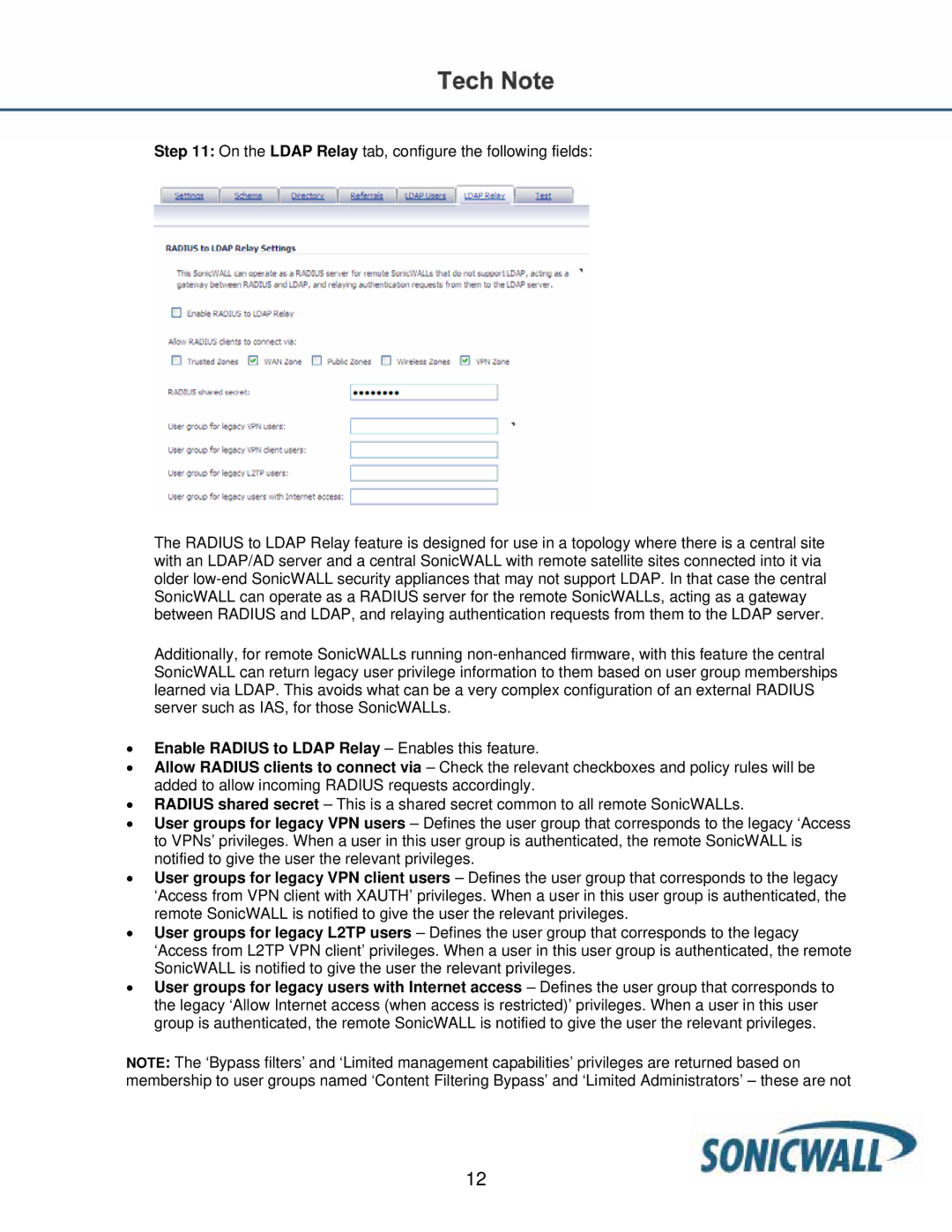
Step 11: On the LDAP Relay tab, configure the following fields:
The RADIUS to LDAP Relay feature is designed for use in a topology where there is a central site with an LDAP/AD server and a central SonicWALL with remote satellite sites connected into it via older
Additionally, for remote SonicWALLs running
•Enable RADIUS to LDAP Relay – Enables this feature.
•Allow RADIUS clients to connect via – Check the relevant checkboxes and policy rules will be added to allow incoming RADIUS requests accordingly.
•RADIUS shared secret – This is a shared secret common to all remote SonicWALLs.
•User groups for legacy VPN users – Defines the user group that corresponds to the legacy ‘Access to VPNs’ privileges. When a user in this user group is authenticated, the remote SonicWALL is notified to give the user the relevant privileges.
•User groups for legacy VPN client users – Defines the user group that corresponds to the legacy ‘Access from VPN client with XAUTH’ privileges. When a user in this user group is authenticated, the remote SonicWALL is notified to give the user the relevant privileges.
•User groups for legacy L2TP users – Defines the user group that corresponds to the legacy ‘Access from L2TP VPN client’ privileges. When a user in this user group is authenticated, the remote SonicWALL is notified to give the user the relevant privileges.
•User groups for legacy users with Internet access – Defines the user group that corresponds to the legacy ‘Allow Internet access (when access is restricted)’ privileges. When a user in this user group is authenticated, the remote SonicWALL is notified to give the user the relevant privileges.
NOTE: The ‘Bypass filters’ and ‘Limited management capabilities’ privileges are returned based on membership to user groups named ‘Content Filtering Bypass’ and ‘Limited Administrators’ – these are not
12
